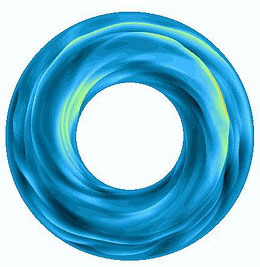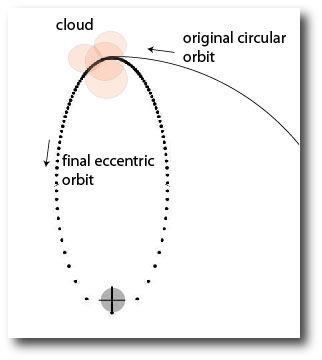
Imagine leaving the front door open on a cold day, and having the inside of your house grow warmer as a result. Curiously, that’s exactly how self-gravitating systems such as stars, nascent giant planets, accretion disks, and globular clusters behave. Drawing energy from any of these systems causes them to heat up. The negative heat capacity of self-gravitating systems is one of the most central concepts in astrophysics.
The dynamics of the Keplerian orbit can be used to understand how this works. Imagine a particle initially on a circular orbit around a central star. The particle slams into a cloud of dust. As a result, the dust and the particle both heat up and radiate energy. The particle decreases its velocity and drops into an eccentric orbit with a smaller semi-major axis.

Here’s the key point: the smaller semi-major axis means that the average squared speed of the particle (averaged over an orbit) has increased. The fact that the particle is slow near apastron is more than compensated by the high speed near periastron. Since the particle’s kinetic temperature is proportional to its speed squared, the temperature of the system goes up. In effect, the reserve of gravitational potential energy gets double billed: once to provide the radiated energy, and a second time to increase the kinetic energy of the particle.
It’s a lot like taking a cash advance on your credit card and using half to pay late bills and the other half to buy a set of 22 inch rims for your Escalade. It’s a little sad to observe Nature operating on such a dissolute and spendthrift principle.

Pingback: systemic - Good Librations
But the system also gets smaller. Isn’t it therefore the case that the increased heat is an expression of energy density increasing at the expense of the volume of the system, which shrinks so much that the total energy content of the system is still smaller than it started out, even though the density has increased?
So to make the analogy with the open front door correct, in a house where leaving the front door open caused it to heat up, doing so would primarily cause the house to deflate. And it would shrink fast enough that even though heat was draining from it, it would still heat up.
Ah, I guess that is what motivated your remark on the spendthrift principle of nature.